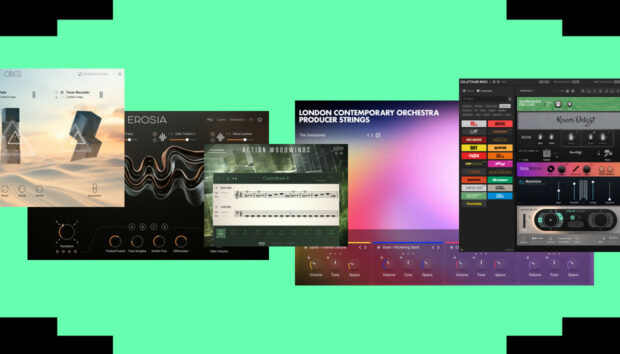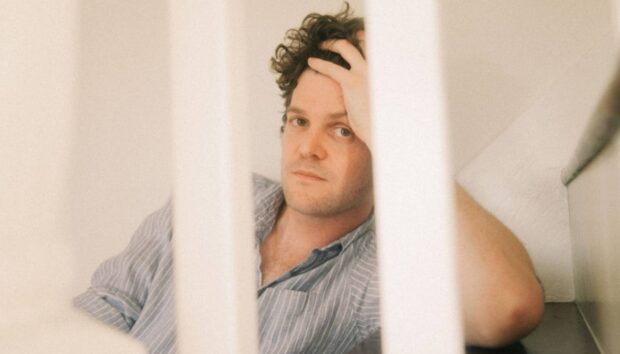In the last couple years, Kilbourne’s name has become synonymous with a new breed of hardcore: chaotic, unapologetic, fierce, weird and free. Her releases on labels like Casual Gabberz, Nekro Editions and Lenny Dee’s Industrial Strength – plus forthcoming EPs on PRSPCT and Evar Records – are thick slabs of visceral body music, exploring themes of release, chaos, euphoria, dysphoria and ecstasy.
Ashe Kilbourne grew up on Sourland Mountain in the center of rural New Jersey, U.S.A., deep in the woods equidistant between New York City and Philadelphia. Musically, she was raised on a raw diet of metal, punk, Jersey and Philly club, plus the more twisted corners of blog house, happy hardcore and blistering gabber blasting out of car stereos. After college, she moved to New Orleans but landed in New York City in 2017 – with the frenetic city as a backdrop, Kilbourne leaned into a signature sound that’s become increasingly faster, harder and sharper, finding solace in oversized distortion and pleasure in the pain of 200bpm+ kick drums. “There’s not a lot of energy in the U.S. right now that’s comparable to what’s going on in NYC; at least, as far everyone’s interest in raving and pushing your body to extremes and experiencing things as fully as possible,” she says. “That’s really motivating and it makes me want to capture the vitality of that in the music I make.”
Kilbourne recently applied some heavy tweaking to our Patch and Play series, providing an exclusive preset for MASSIVE X. The resulting patch, Retaliation is A Must, deploys complex rhythmical movement and over 10 macros that sculpt the sound from a nasty kick drum into a rave alarm. Named after a hook from Australian drill rap outfit Onefour, Retaliation is A Must offers a multitude of tweakable routing options and heavy sounds for engineering your next battle anthem.
Listen to Kilbourne demo the patch below, download it for yourself, and read on to find out more about her sound design process.
What kind of sounds are you typically drawn to?
I like music that has texture and grit to it, not only in the sound design, but overall. I like the richness of artifacts of digital distortion and really manipulating a sound, and weird timing that isn’t totally on the grid. And just really hard sounds – either a really punchy kick drum or something really gross and noisy and distorted.
For you, what are the essentials of making hardcore?
Having a good kick drum that’s also weird and doesn’t feel like you’ve heard it a million times before. Using lots of different kinds of distortion on all your sounds. At some level it has to have a story, some kind of message or unifying concept to it, to make it interesting. It’s a genre that can fall into the formulaic so easily, so I think it’s important to have things that are grounded in nuance and specific to you or to the song. But yeah, also the kick drum’s got to be hard!
What was your approach to making this Retaliation is A Must preset for MASSIVE X?
Almost always, my approach is to start with some kind of simple descending sine wave for a “doooink” sound – you know, a kick drum at its most basic level. Then filter that, distort that, filter that, distort that. The two wavetable oscillators I used were Round Onyx and Bum Sq. It looks like Round Onyx is kind of a sine wave that’s been slightly modulated to be more choppy, but overall maintains a sine shape – that forms kind of the base, or the “regular” part of the kick. The Bum Sq one is a bit more of the growl or the “character.” The Noise Modules are a big part of it too, especially Noise 2, the “Metal,” is really textural. If you listen to it alone, it’s fully like sheet metal being scratched or something.
I also got familiar with the routing system of Massive X because it offers cool possibilities of quickly rearranging the order of effects, which is what I often do. As far as the routing, I have both noise channels and both oscillators all running parallel to the first distortion. From there, that runs to a filter directly, as well as feeding back on itself before the filter; among other things, it also runs to another distortion, which then runs to an EQ. I liked changing the order of those various effects – running distortion B first, instead of A, or front-loading the filter as opposed to using it at the end – and seeing what would happen.
The way the routing is set up it enables you to change the order pretty quickly; visually, it’s almost friendly, as you can just see the lines moving from A to B to C. There are also enough different effects that you can do a lot of stylistic tweaks, like adding a bit of a slight delay to give it a swell feeling (like a reverse bass sound) or automating the reverb so that it comes in at the end of the kick for movement.
What elements of MASSIVE X did you lean on more heavily to shape the sound?
Once I got a basic distorted hardcore kick, I used the Performers to modulate the wavetable so there was a lot of variation within each beat. For example, I have the reverb mix on Performer 2; at the end of the beat, it does a really dramatic incline up and stays there until I re-trigger the sound. I used one of the Performers to modulate kind of like a psytrance bass, something that emphasizes the third and fourth 16th note, like “boom, ba ba boom, ba ba boom.” I used up to three different modulations on each of the effects usually. It was cool to be able to draw it in – it enables you to get really technical with the bending of the sound.
Similarly with the envelopes, I enjoyed being able to just modulate things like slight pitch variations and slight increases and decreases in the effects at the beat level. For me, the start of making a kick drum is so much about subbing out different wavetables, filters, and distortion rapid fire until something is hitting. Then at the end you have to buckle down and really understand how you can get it to sound just so.
Talk us through all the fun macros you used.
With the macros, a lot of them are just slight shifts in wavetable position to give things a slightly different timbre – maybe the punch of the kick pretty similar but its body feels slightly more high-end or thicker or thinner. There’s one macro that partially reverses the sound automation for a “reverse bass” feel. Swamp and Squelch, numbers 4 and 5, make it pretty ugly at a full 100%, which is good for using as a fill – you can modulate into something less punchy and less impactful but weirder and more noisy at the end of a bar and then return to the original sound at the start of the next bar.
There’s also two macros for cutting the sound, which is pretty common in hardcore. At the start a track or during the fill, you cut the release for more of a staccato noise and then open up the sound as it progresses. Macro 11 is cool. I called it Alarm because it’s really kind of a fire alarm sound – it’s very synthy and ringing and not a kick drum at all. Again, it’s cool to automate into that.
What was on your mind about how people might use this preset?
At the philosophical level, it’s made to not just use as is – it holds a lot of different macros and controllable features that enable you to really evolve the sound. It will be the most exciting (and most useful to me and anyone else who wants to use it), if you switch up aspects of it, either the wavetable that you’re using or the order of things. It’s kind of like building Legos – most of the time, you aren’t starting at square one. You have something cool that you built before and you’re breaking down a lot of it to make something new, like “I’m gonna take this element from my boat and deconstruct it and make this the top of a castle now.”
It’s also made to be layered. You could make another Massive patch that’s just the click (or the top of the kick) and layer that on top; you can make one that’s just the sub and put those all together. I like working off of my previous works or others’ work, starting with their sound design and making it my own. It’s almost like you’re being given a bunch of bones to rebuild the animal.
Have you used the Retaliation is a Must patch on any of your new tracks?
Yeah! I used the patch on my remix for Plexøs’ “What’s Left of Happiness.” There’s a play in between this kick drum from Massive X, which feels inspired by (or at least reminiscent of) late ’90s/early ’00s industrial hardcore, stuff like [Dutch label] Enzyme Records, and this almost meme-level psy-kick that’s so popular now, where it’s got a relatively clean body and the attack is kind of like a laser noise, like “tschoom.” Jumping back and forth between those two styles felt like a fun meditation on how mainstream hardcore relates to the weird margins of it. Like, do these two sounds relate to one another? Or are they from totally disparate times, kind of like vestigial tails of a scene that’s very different now?
Hear more from Kilbourne on Bandcamp.
















